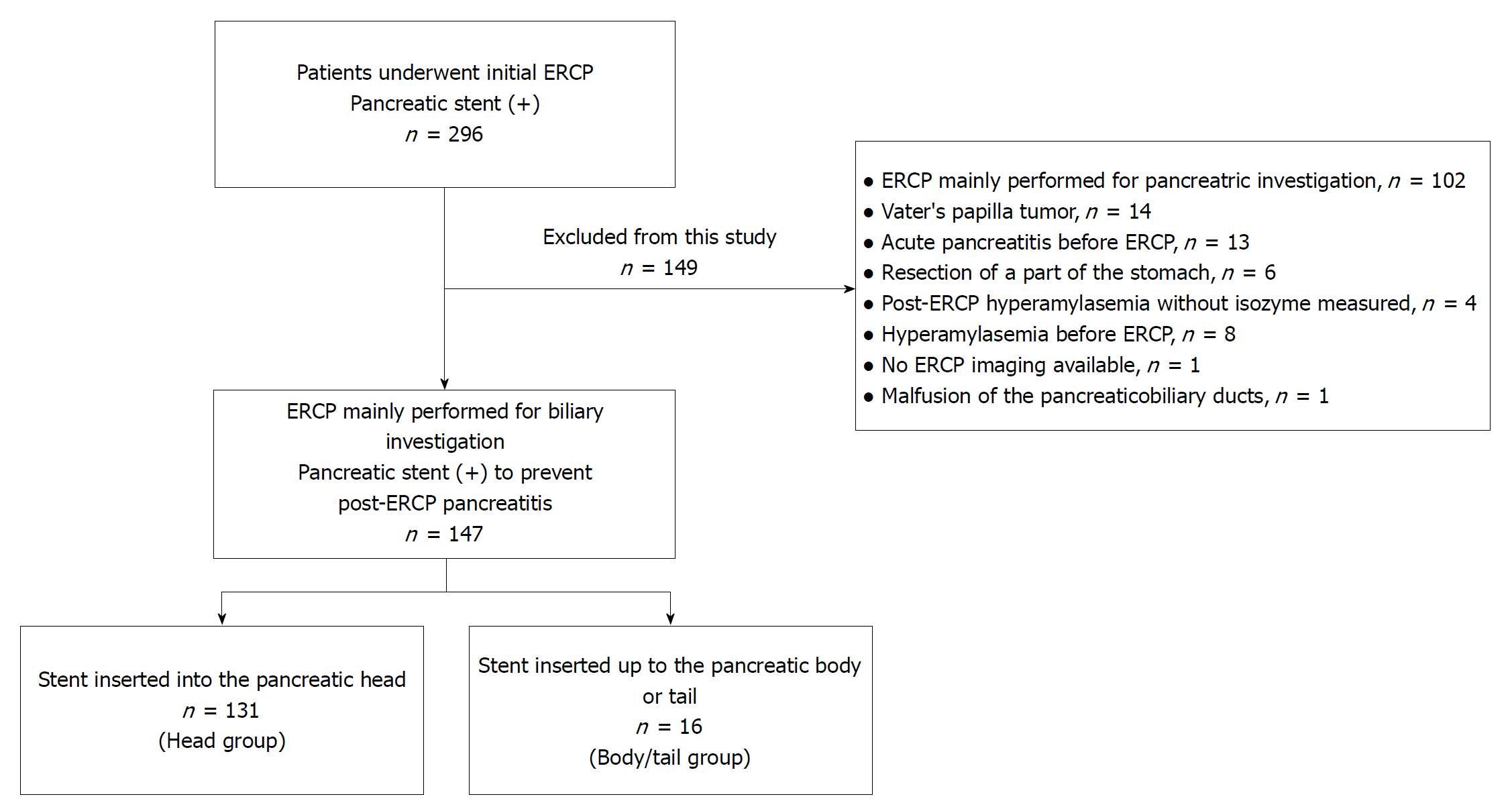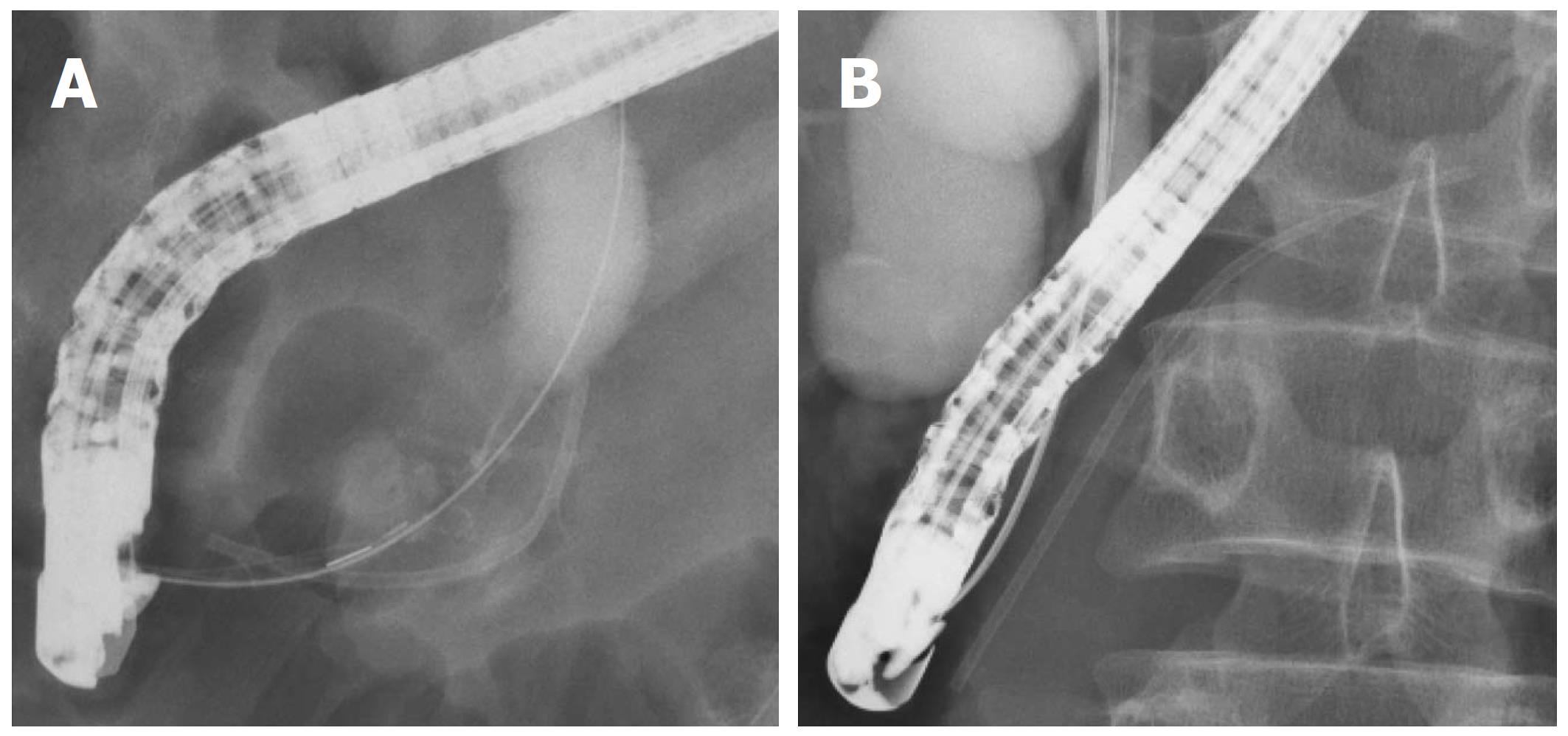Copyright
©The Author(s) 2018.
World J Gastroenterol. Jun 14, 2018; 24(22): 2392-2399
Published online Jun 14, 2018. doi: 10.3748/wjg.v24.i22.2392
Published online Jun 14, 2018. doi: 10.3748/wjg.v24.i22.2392
Figure 1 Subjects in this study.
A total of 296 patients underwent their first ERCP procedure and had a pancreatic stent inserted at our hospital between January 2007 and November 2017. Among these patients, 147 who received ERCP primarily for biliary investigation and had a stent inserted to prevent post-ERCP pancreatitis were included in this study. We divided these patients into two groups: 131 patients with a stent inserted into the pancreatic head (head group) and 16 patients with a stent inserted up to the pancreatic body or tail (body/tail group). ERCP: Endoscopic retrograde cholangiopancreatography.
Figure 2 Inserted pancreatic stent.
A: A pancreatic stent (Geenen 5 Fr, 5 cm) was inserted into the pancreatic head; B: A pancreatic stent (Geenen 5 Fr, 7 cm) passed the angle between the pancreatic head and body and was inserted up to the pancreatic body or tail.
- Citation: Sugimoto M, Takagi T, Suzuki R, Konno N, Asama H, Sato Y, Irie H, Watanabe K, Nakamura J, Kikuchi H, Waragai Y, Takasumi M, Hikichi T, Ohira H. Pancreatic stents for the prevention of post-endoscopic retrograde cholangiopancreatography pancreatitis should be inserted up to the pancreatic body or tail. World J Gastroenterol 2018; 24(22): 2392-2399
- URL: https://www.wjgnet.com/1007-9327/full/v24/i22/2392.htm
- DOI: https://dx.doi.org/10.3748/wjg.v24.i22.2392














